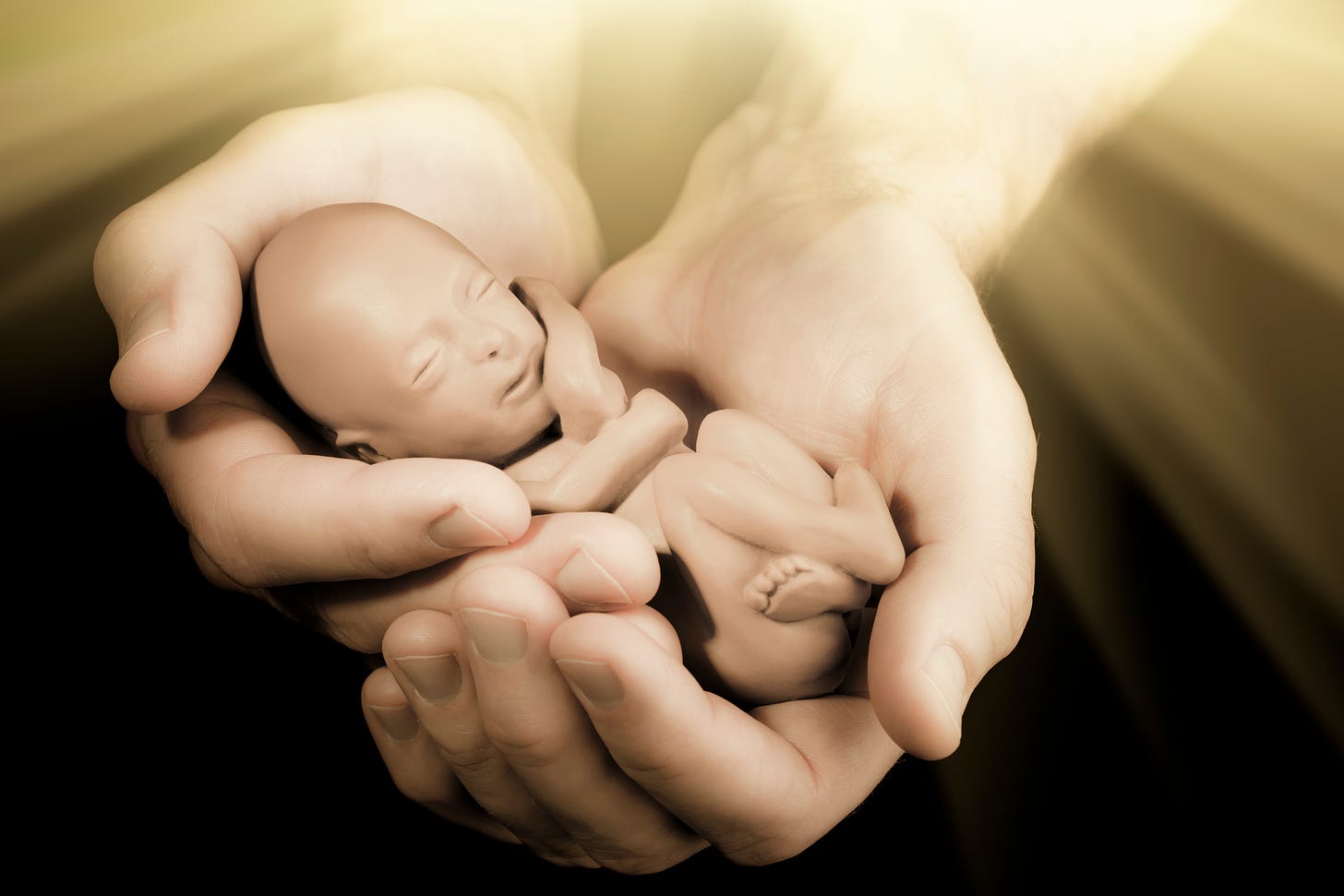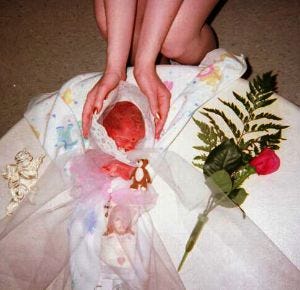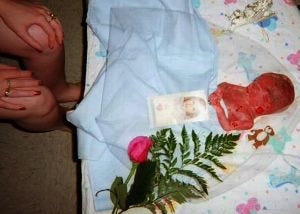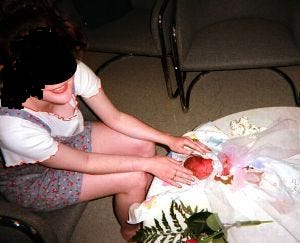Article Reveals Damning Details About Second-Trimester Abortions
The article, written by an abortion supporter, shows the emotional trauma involved in "mid-trimester" abortion.
Today I want to cover a 2002 study in The Journal of Clinical Nursing called "Working with Women Experiencing Mid-Trimester Termination of Pregnancy: The Integration of Nursing and Feminist Knowledge in the Gynaecological Setting."
While this is an older study and discusses abortion in New Zealand, I think it has some insights into the abortion debate today.
Late-Term Abortions in New Zealand and the United States
The study concerns abortions between 12 and 20 weeks. It describes the aborted baby at this age as having "a very human form."
Second-trimester abortions in New Zealand are done by the induction method. Nurses give the pregnant person drugs to cause labor, and a premature baby, too young to survive, is born.
In the United States, the induction abortion method is used primarily in the third trimester. You can see a former abortionist explain this method below.
Abortions in the second trimester in the US are usually committed by the D&E method, where the baby is dismembered with forceps and pulled out, piece by piece.
You can watch a video where a former abortionist illustrates this method below.
The Trauma Caused by Second Trimester Abortions
The article in The Journal of Clinical Nursing warns that a second-trimester abortion committed by induction can be a traumatic experience for both the pregnant person and the abortion worker.
It says that an abortion at this stage "has the potential to cause a great deal of distress for the women involved because of the psychological and physical impact of the procedure."
Then it says that abortion workers (nurses, in this case) "can also find this a distressing clinical event due to the complex nature of the management and care required."
The article also mentions that the pregnant person can experience "distressing side effects" from the medication, including nausea, diarrhea, and heart palpitations.
Emotional Trauma for the Person Having the Abortion
The article says that delivering a dead or dying baby in this type of abortion is "always very emotional for the woman, the reality of the event often catching her unprepared and leading to her requiring a great deal of support from nurses."
This makes one wonder if a lack of counseling leaves the pregnant person "unprepared." Do these nurses tell the people coming in for abortions exactly what they're going to experience and witness?
The following first-hand account illustrates how traumatic an abortion by induction can be.
Cindy Hendrickson had an abortion by the saline abortion method. This method, rarely used in the United States today, comprised injecting a toxic saline solution into the pregnant person's uterus.
This saline solution poisoned and killed the baby, often burning his or her skin and lungs. Then the pregnant person went through labor to deliver her dead child. Abortionists stopped doing saline abortions because they were dangerous to the pregnant person and resulted in too many live births.
Hendrickson wanted to make an adoption plan for her baby, but her father insisted on abortion, and her mother went along with the plan. She had her saline abortion at an abortion facility in Houston.
The nurse never told me what would happen.
She describes her experience:
Mother paid them $500 in cash and was told to leave me there … That was the last I saw of her. I was given a shot of Demerol, and around midnight, the doctor came to my room and injected saline into my uterus. The nurse never told me what would happen.
Later, I went to the bathroom and saw my baby hanging from the umbilical cord. As I screamed hysterically for help, I heard the nurses out in the hall talking and laughing.
After 15 minutes, my roommate went to get a nurse. She made me get back in bed with the baby hanging between my legs and said they had to wait until I passed the placenta. I lay in bed crying, trying not to touch the baby with my legs. Finally, they removed it.
Going through this terrible experience caused deep emotional scars. Hendrickson describes the painful aftermath of her abortion:
During college, I started taking speed, stopped eating, and was anorexic (90 pounds.) I was on antidepressants for 20 years until recently … I spent 8 years after the abortion in destructive behaviors, going to three different secular counselors and never talking about the abortion.
After years of suffering, Hendrickson went to a Christian counselor who guided her through the steps to mourn her child and finally find healing.
The Idea that Abortion Kills a "Human Being"
The article in The Journal of Clinical Nursing says:
After the woman has delivered, nurses are involved in the actual management and appropriate disposal of the fetus. The way this experience is managed requires them to carry out a variety of actions with great sensitivity, and these seem to support the idea that this is a human being.
This is because the baby is a human being.
Taking Photographs of the Dead Child and Saying Goodbye
The article says that the "management" of the dead baby varies from country to country, but in New Zealand:
[N]urses are frequently required to clean and dress the fetus, ensure transfer to an appropriate receptacle if the mother wants to see it, all the while supporting the woman as she goes through this process.
This often occurs after a lengthy period when the women and nurses have been intimately connected, working through a range of decisions such as whether the mother wants to see, and perhaps name or photograph, the fetus.
As shocking as the concept of a parent wanting to see and photograph the body of a baby they've just chosen to kill is, this practice is not uncommon and also takes place in the United States.
American abortionist Renata Laxova provided abortions to couples with disabled pre-born babies. In the article, "Prenatal Diagnosis of Genetic Diseases" in Comprehensive Therapy, she says that in her practice:
Parents are asked if they wish to see, hold the fetus (frequently they do), and whether they wish to receive photographs as well as copies of the autopsy report.
We can take pictures of you and the family holding the baby if you wish, and that is not an uncommon request.
Late-term abortionist George Tiller also provided this "service" to post-abortive parents. On his website, he described what his abortion facility offered:
If you wish to see the baby, we call this an identification and separation encounter. About 2-3 hours after you deliver and after the twilight anesthesia has worn off, so that you will remember the process, we will bring the baby to you either at the bedside or we will go to our quiet room, and we will bring the baby to you there…
You may hold the baby. We can take pictures of you and the family holding the baby, if you wish, and that is not an uncommon request.
The identification/separation encounter may be very brief, five or ten minutes. It may even take less than that. Or the identification/separation encounter may involve 2 or 3 hours of bonding with the baby—the identification that this is your baby, and you have had a delivery…
The difficult part of the process is saying goodbye to the relationship that you have with your baby…
[W]hen you have finished your identification encounter you will separate from the baby by giving the baby to us and you will begin the process of saying goodbye on a long-term basis and you will begin your journey into growth, recuperation, recovery, and healing.
Pictures Tell the Sad Story of One Aborted Baby
A 2001 article in Agape Press featured photos a couple took of their aborted baby at Dr. Tiller's abortion facility. The parents, who regretted the abortion, gave the photos to then-Operation Rescue West director Troy Newman.
The couple aborted their baby because she had cystic fibrosis. Although cystic fibrosis is a serious illness, it is treatable, and those with the disease often live into middle-age and older.
Marlene Pryson, the oldest living person with cystic fibrosis, turned 86 in 2021. Although not all people with cystic fibrosis live such long lives, the lives they do live are deeply meaningful and their friends and family love them. The abortion robbed the little girl of any chance at life.
The Personal Struggles of Nurses Carrying out Abortions
The Journal of Clinical Nursing describes the ambivalence and personal struggles some nurses involved in providing mid-trimester induction abortions have:
In the specific clinical situation of mid-trimester termination nurses have expressed ambivalence that comes about through the distress at being involved in abortion, while holding the belief that women should have the right to choose the option of termination…
[N]urses, although supporting the provision of a service, must be able to manage the psychological impact of being an active participant in an event where the outcome is prevention of the development of life.
It further points out:
[W]heras the woman will probably go through this process once in her lifetime, nurses may go through it several times a year or even in the same week.
The physical experience, psychological distress and decisions that are made are all obviously extremely distressing for the women, but it appears that the effects of the procedure have not been considered from the nurse's perspective.
The article acknowledges these abortions create an "emotionally demanding situation, which has the potential to be psychologically unsafe for both [the person having the abortion and the nurse]."
The article also admits that the pro-abortion movement often promotes second trimester abortions without considering the nurses and abortion workers who must (if they get their way) help commit them:
Concerns arise that, as feminist activists working to ensure women have control over their fertility, we have lost sight of the fact that terminations have to be managed by other women to whom little or no thought has been given.
A Confession That Babies Are Sometimes Born Alive
The article then admits that babies are sometimes born alive in these abortions:
In the case of late termination, the death of the fetus before delivery, although usual, is not inevitable except in rare cases of extreme physical abnormality such as anencephaly. At times the fetus will actually attempt to breathe and/or move its limbs, which makes the experience extremely distressing for nurses.
Though rare, live births after abortions also occur in the United States. According to official records, five babies were born alive after abortions in Minnesota in 2022.
What the Public Doesn't Know and Wouldn't Support
Finally, the author of the article discusses how the "general public" can “distance themselves from the reality of the situation" because these abortions take place behind closed doors. Very few people know the details of how late-term abortions are done, and even fewer witness them.
The public is kept in the dark in both America and New Zealand.
The article acknowledges that these abortions, and the live births that sometimes accompany them, create "situations and events that many members of society would find almost impossible to accept."
Overall, the article conveys the horror of late-term abortions, and the destructive impact they have, both on the people having them and the people committing them.
Source: Annette D. Huntington, RGON, BN, PhD "Working with women experiencing mid-trimester termination of pregnancy: the integration of nursing and feminist knowledge in the gynaecological setting" Journal of Clinical Nursing 2002; 11: 273-279






